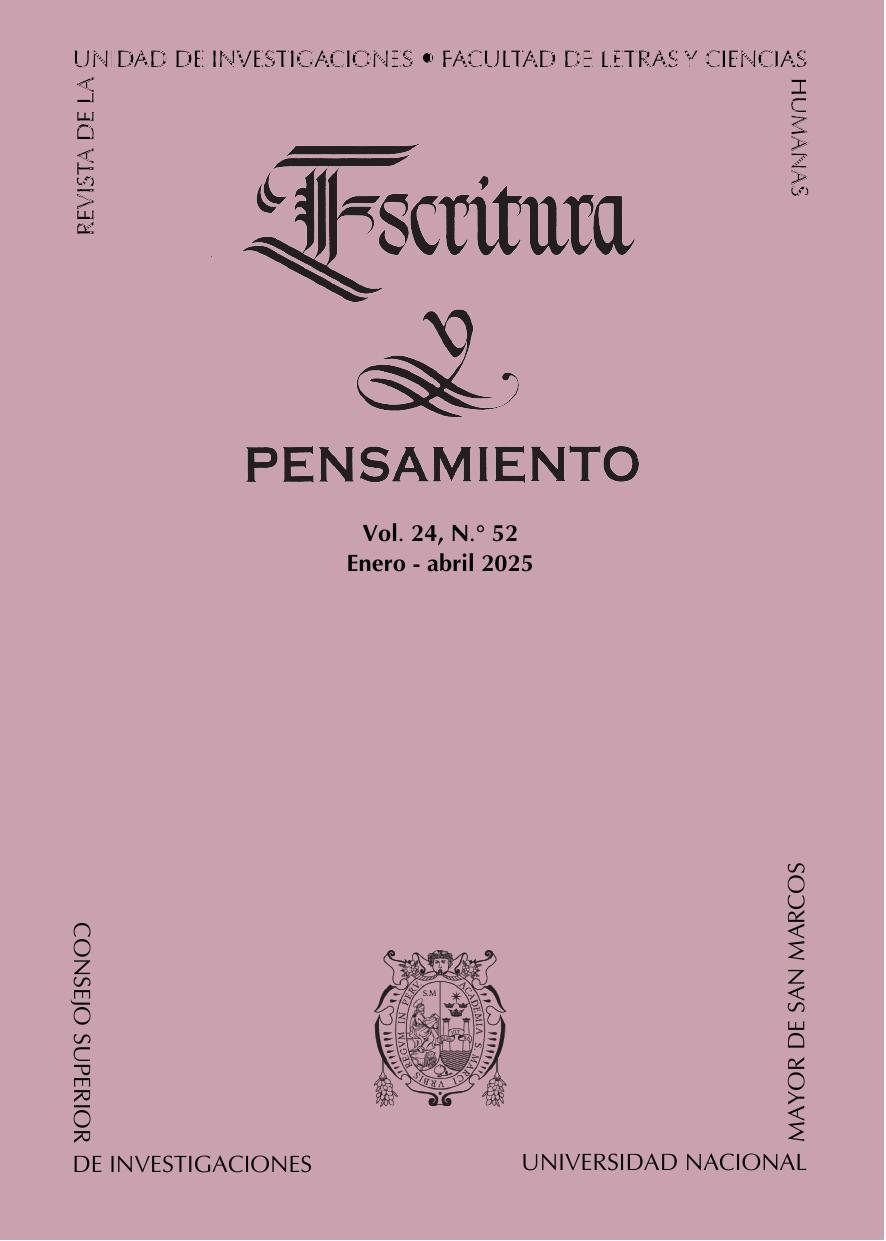The madman's speech in Theorem of the enlightened anarchist
DOI:
https://doi.org/10.15381/escrypensam.v24i52.30139Keywords:
madness, literature, discourse, societyAbstract
This research proposes an analysis of the madness present in the work Teorema del anarquista ilustrado by Enrique Verástegui Peláez and the relationship between the idea of transgression throughout history and its development in literature. The analysis focuses on the Foucauldian theory on madness and the aspects of the madman's discourse present in the corpus of the work, in which we find the development of madness as a subversive discourse against society and politics surrounding the alienated character, who demonstrates that the problems of marginalization, resistance and confinement are present in the lives of those who resist to follow the social norms and political ideas imposed by the power and who, for this reason, are set aside. In addition, this work aims to vindicate the narrative work, little analyzed, of the author.
References
Buitrón, J. (2022). La narración ilustrativa: ficcionsofía y anarcoliberalismo en Enrique Verástegui. El caso de Teorema del anarquista ilustrado. [Tesis para optar el título de licenciado en Literatura]. Universidad Nacional Mayor de San Marcos. https://cybertesis.unmsm.edu.pe/item/b9d1aff2-aa78-4c53-a234-82afba4b020b
Foucault, M. (1967). Historia de la locura. en la época clásica I. Fondo de Cultura Económica. https://proletarios.org/books/Foucault-Historia_de_la_locura_I.pdf
Foucault, M. (1992). El orden del discurso. Tusquets Editores.
De Rotterdam, E. (2011). Elogio de la locura. Alianza Editorial.
Verástegui, E. (2009). Teorema del anarquista ilustrado. Ediciones Altazor.
Downloads
Published
Issue
Section
License
Copyright (c) 2025 Rosa Elena Arias Martínez, Richard Joel Campos Ochoa

This work is licensed under a Creative Commons Attribution 4.0 International License.
AUTHORS RETAIN THEIR RIGHTS:
a. The authors retain their trademark and patent rights, and also over any process or procedure described in the article.
b. The authors retain the right to share, copy, distribute, execute and publicly communicate the article published in the Escritura y Pensamiento (for example, place it in an institutional repository or publish as part a book), with acknowledgment of its initial publication by Escritura y Pensamiento.
c. Authors retain the right to make a subsequent publication of their work, to use the article or any part of it (for example: a compilation of their work, lecture notes, thesis, or for a book), provided that they indicate the source of publication (authors of the work, journal, volume, number and date).





